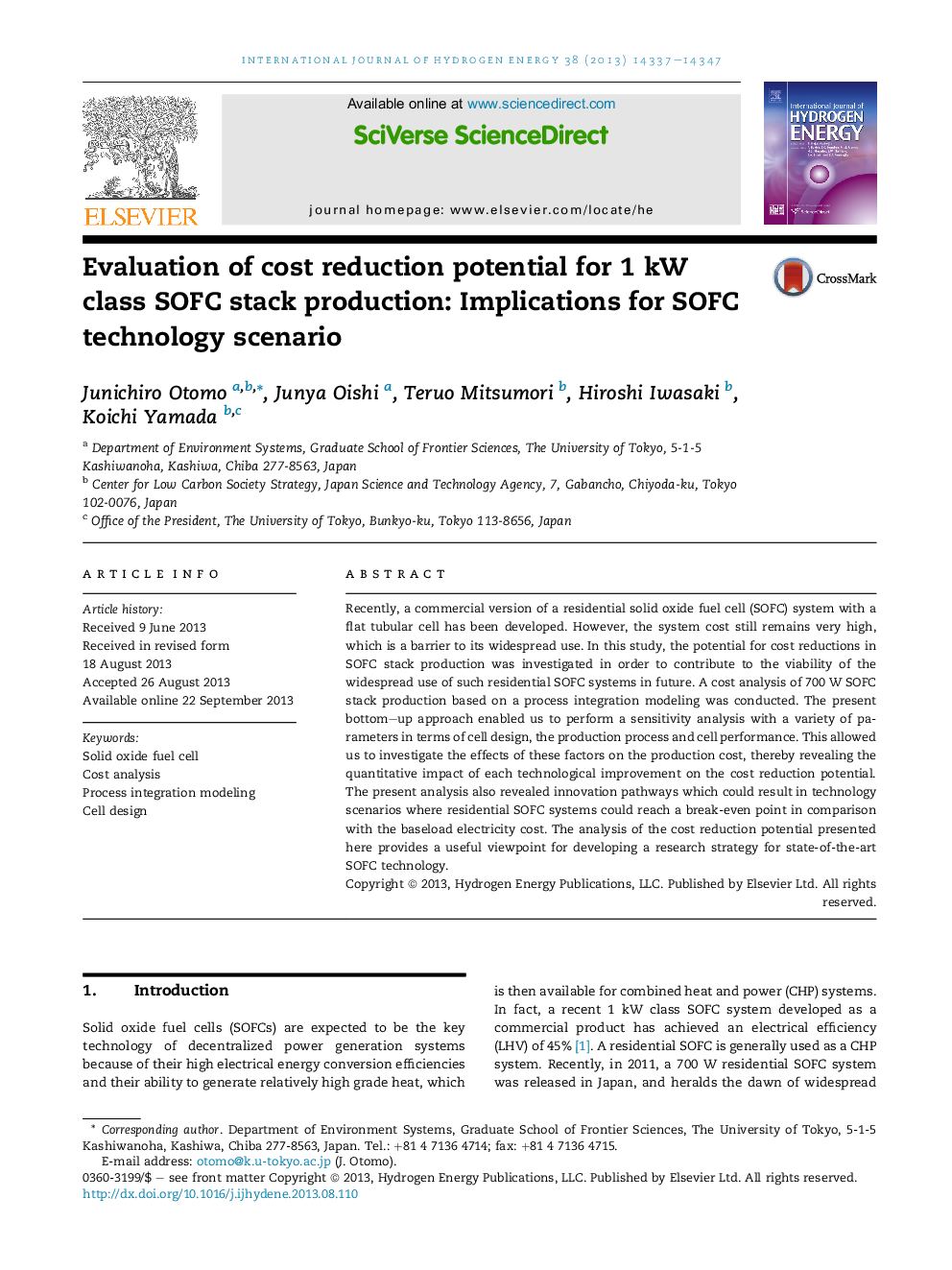| Article ID | Journal | Published Year | Pages | File Type |
|---|---|---|---|---|
| 1281395 | International Journal of Hydrogen Energy | 2013 | 11 Pages |
•A cost analysis of SOFC stack production was performed based on process integration modeling.•The analysis suggests that a current flat tubular type of cell has sufficient cost reduction potential.•A cell design change is very effective in reducing stack production cost.•Proposed SOFC innovation pathway shows to reach a break-even point for electricity cost.•The present analysis is useful in designing a strategy for the more widespread use of SOFCs.
Recently, a commercial version of a residential solid oxide fuel cell (SOFC) system with a flat tubular cell has been developed. However, the system cost still remains very high, which is a barrier to its widespread use. In this study, the potential for cost reductions in SOFC stack production was investigated in order to contribute to the viability of the widespread use of such residential SOFC systems in future. A cost analysis of 700 W SOFC stack production based on a process integration modeling was conducted. The present bottom–up approach enabled us to perform a sensitivity analysis with a variety of parameters in terms of cell design, the production process and cell performance. This allowed us to investigate the effects of these factors on the production cost, thereby revealing the quantitative impact of each technological improvement on the cost reduction potential. The present analysis also revealed innovation pathways which could result in technology scenarios where residential SOFC systems could reach a break-even point in comparison with the baseload electricity cost. The analysis of the cost reduction potential presented here provides a useful viewpoint for developing a research strategy for state-of-the-art SOFC technology.
